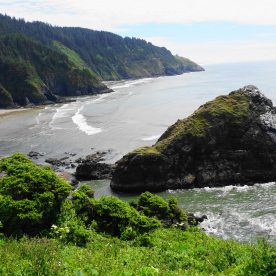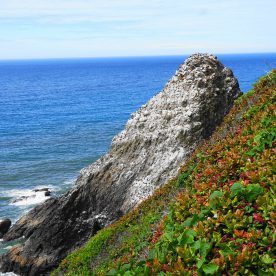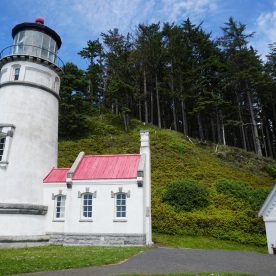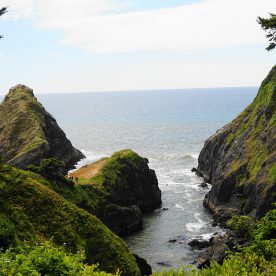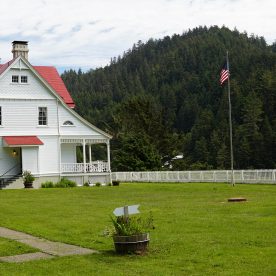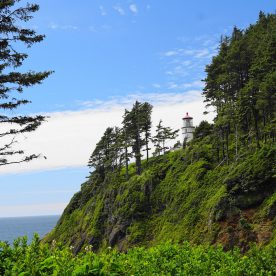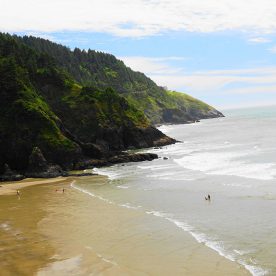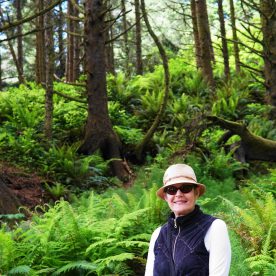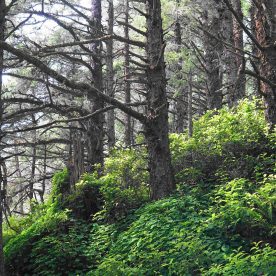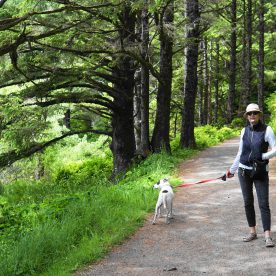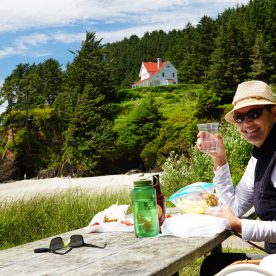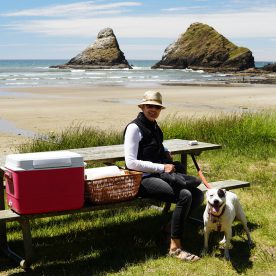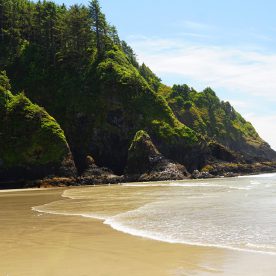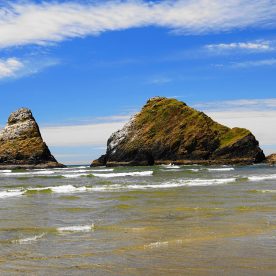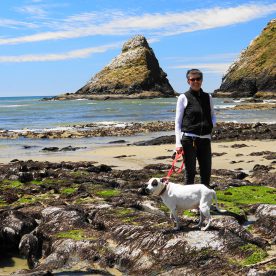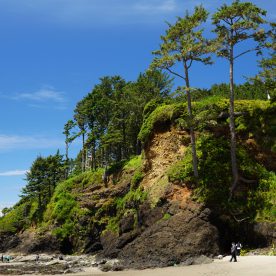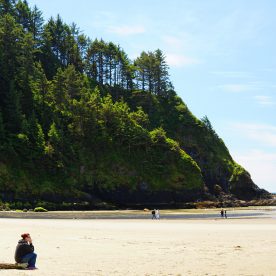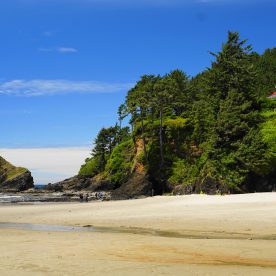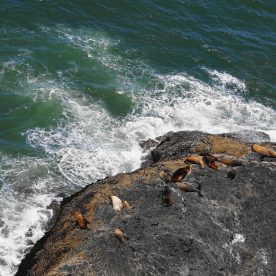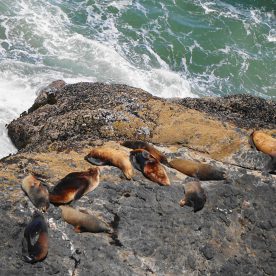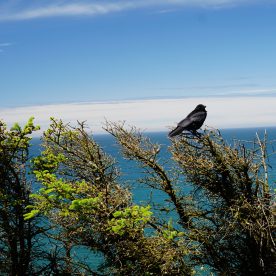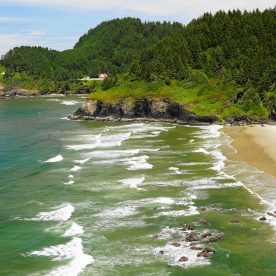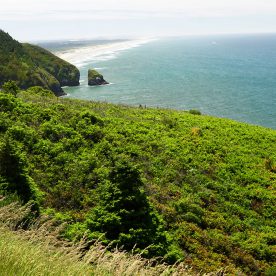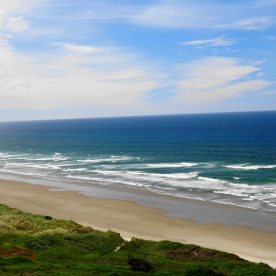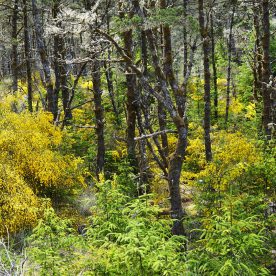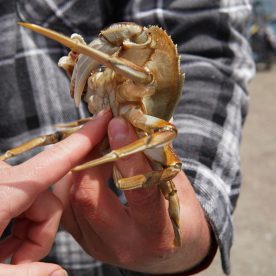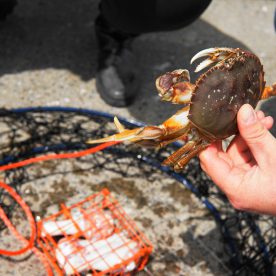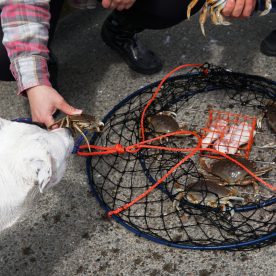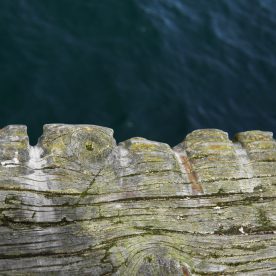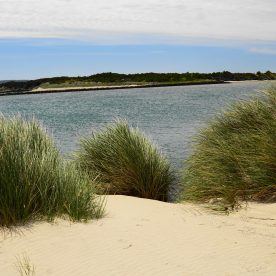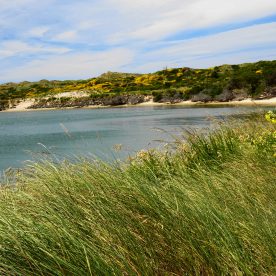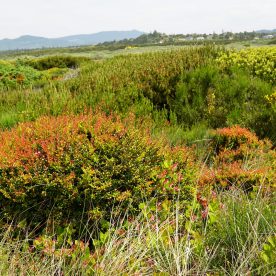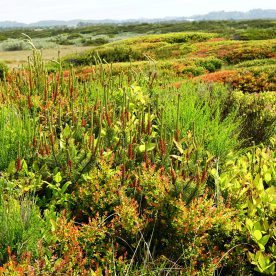Heceta Head is named after the Spanish explorer Bruno de Heceta, who explored the Pacific Northwest during the late 18th century. Before him, Heceta Head was a spot of frequent fishing and hunting by the American Indian tribes that populated the area. Heceta Head is part of the Siuslaw Indians’ traditional lands, known in their language as ɫtúwɪs. They hunted sea lions in the area and gathered sea bird eggs from the offshore rocks. It was also the site of a legend — the Animal People built a great stone wall, which is now the cliffs, and tricked the Grizzly Bear brothers to their deaths there. In 1888, white settlers moved into the area and claimed 164 acres (66 ha) of the surrounding land. That same year, the United States Lighthouse Service approved the building of the lighthouse, and the government bought 19 acres (7.7 ha), out of the 164 acres (66 ha) previously purchased, for the lighthouse structures.
The lightkeepers’ houses, circa 1900. The house on the left was razed in 1940.
Aerial view, 1954
In 1892, a crew of 56 began construction the light. Because of the site’s seclusion, building materials were either shipped in if the weather and tide permitted, or brought from Florence by wagon, the latter usually taking four or five hours. Stones were brought from the Clackamas River and bricks came from San Francisco. The lens system was made by Chance Brothers. Completed in August 1893, the entire project cost $80,000 and consisted of:
The lighthouse
Houses for the head lightkeeper, the two assistant lightkeepers and their families
A barn
Two kerosene oil storage buildings — if one had caught fire, there was a secondary source
Heceta Head Light and Keepers Quarters was placed on the National Register of Historic Places in 1978 for its architectural and engineering significance. The site originally included several other buildings — farm buildings and the single-family head lighthouse keeper’s house, which was demolished in 1940, and was very similar in size and design to the remaining house. Due to electrification, the head lighthouse keeper was no longer needed, and the house was bought for $10 and dismantled for its lumber, which was used to build Alpha Bit bookstore-cafe in Mapleton, still standing today. The remaining keepers’ house was a duplex that housed the first and second assistant lighthouse keepers and their families. After the light was automated in 1963, the last keepers moved away, and the remaining house was leased to Lane Community College in 1970 by the U.S. Forest Service, which had taken over management of the building. The porch of the Queen Anne-style house underwent restoration in 1981.
Restoring the lighthouse, February 2012
The Heceta Head Lighthouse closed to the public in August 2011 for restoration and repairs. Under the supervision of OPRD preservation architect Sue Licht, a team of more than 100 subcontractors and craftsmen, the majority of whom were from Oregon, removed cement stucco that had sealed in moisture so that the lighthouse could air out in the damp coastal environment. They also replaced and restored the tower’s historic metalwork and masonry, installed new windows, and repaired the lens rotating mechanism. The interior and exterior of the lighthouse were repainted and the original wood floor of the workroom was uncovered and reconditioned. The lighthouse has been returned as much as possible to the way it would have looked in 1894. It was open again after two years on June 8, 2013, when the OPRD welcomed a group of nearly 100 supporters to Heceta Head State Scenic Viewpoint to celebrate the reopening.
